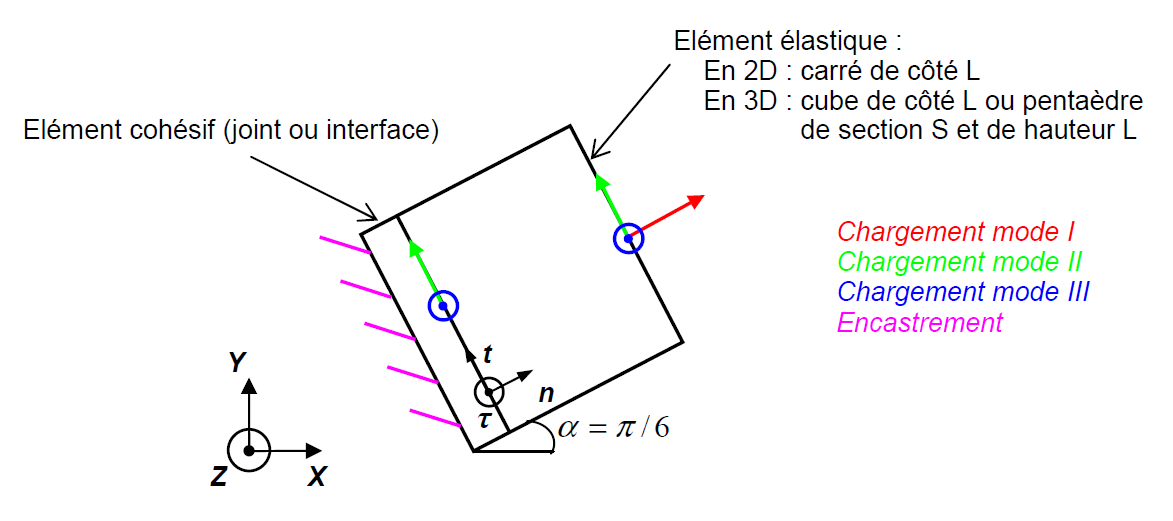1. Reference problem#
1.1. Geometry#

Figure 1: Representation of the system of two elements in the plane \((X,Y)\) .
We choose \(L=1\mathrm{mm}\).
1.2. Material properties#
Cube : elastic
Young’s module: \(E\mathrm{=}3\mathrm{\times }{10}^{12}\mathit{Pa}\)
Poisson’s ratio: \(\nu =0\)
normal stiffness: |
\({K}_{N}={10}^{12}\mathit{Pa}/m\) |
(keyword: K_N) |
tangential stiffness: |
\({K}_{T}\mathrm{=}2\mathrm{\times }{10}^{12}\mathit{Pa}\mathrm{/}m\) |
(keyword: K_T) |
Damage activation threshold: |
\(\mathrm{\alpha }={10}^{⁻7}\) |
(keyword: ALPHA) |
fragile break smoothing parameter |
\(D1=1\) |
(keyword: PENA_RUPTURE) |
Fluid density (only for HM models) |
\({\mathrm{\rho }}_{\mathit{fluide}}=\mathit{kg}/{m}^{3}\) |
(keyword: RHO_FLUIDE) |
Dynamic fluid viscosity (only for HM models) |
\({\mathrm{\mu }}_{\mathit{fluide}}=\mathit{Pa}\mathrm{.}s\) |
(keyword: VISC_FLUIDE) |
Flow regulation opening (only for HM models) |
\({\mathrm{\delta }}_{\mathit{min}}=m\) |
keyword: OUV_MIN) |
NB: Material data is of course not intended to represent a particular material. They are only intended for numerical validation tests.
1.3. Boundary conditions and loads#
Embedment: The imposed displacements are zero on the face of the cohesive element opposite to the elastic element. The joint is inclined at 30 degrees with respect to the horizontal plane, which gives the following directions of loading depending on the mode of stress:
In traction test:
An imposed displacement \(U\) is applied to the face of the elastic element opposite the joint (see FIG. 1).
\(\mathit{DX}=5{e}^{-4}\mathrm{cos}(30°)\) |
|
|
In shear test:
Compression pressure is imposed on the face of the elastic element opposite the joint in order to put the seal into a compressed state.
\(\mathit{PRES}={10}^{4}\mathit{Pa}\) |
In addition, an imposed displacement \(U\) is applied to all the nodes on the upper face of the elastic cube.
\(\mathit{DNOR}=\mathrm{0,5}\) |